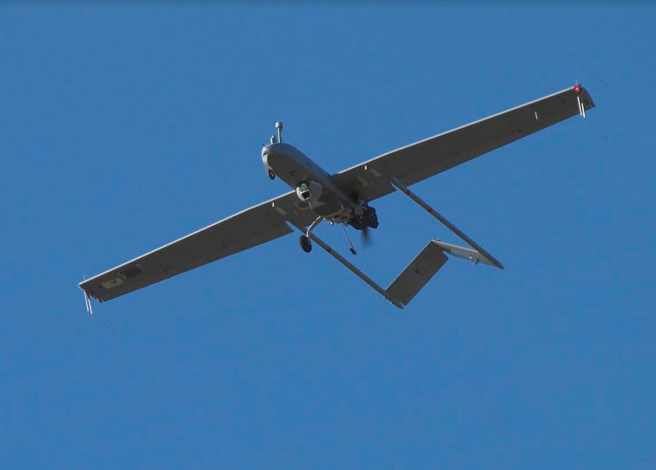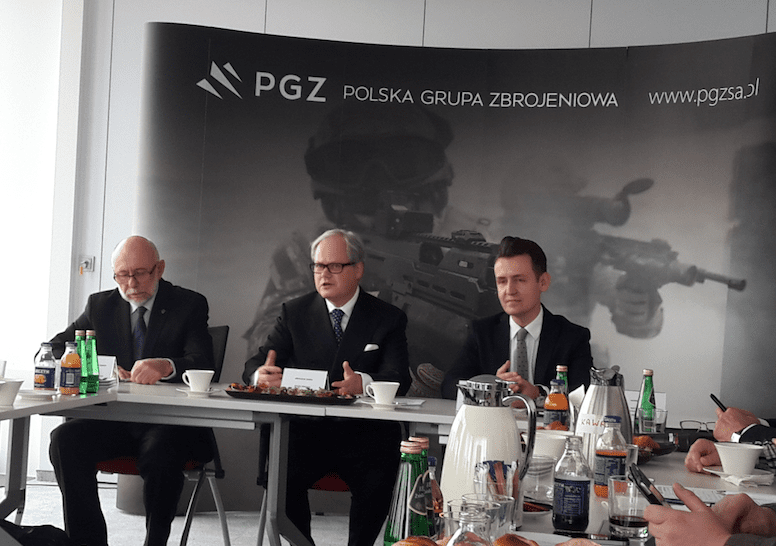Armed Forces
Shadow – Light US Army’s UAV with Armament
Textron Systems company is carrying out a modernization programme pertaining to the short range Shadow tactical UAV systems which have been utilized by the US Army since the end of the last century. These UAVs will be capable of cooperating with attack helicopters too. The new capabilities, including the capability of carrying the armament, make it possible for the Shadow system to take over some of the tasks that, so far, have been carried out by the heavier remotely piloted aircraft.
Shadow RQ-7 UAV was procured in 1999, and it has been used since, up until now. Hence, it is a system which is being continuously modernized, in order to meet the requirements of the contemporary battlefields. Shadow has also been acquired by the US Marines, armed forces of Italy, Australia or Sweden. 85% of the flying time of all of the RQ-7B variants was related to execution of the ISR (Intelligence, Surveillance, Reconnaissance) sorties, and target designation and indication. The UAV is also capable of transferring the relevant data gathered during its operation to other systems. New capabilities of Shadow Light UAV are demonstrated during the MSPO 2016 trade fairs.
At the moment, Textron Systems is in the process of implementation of an order placed by US Army and USMC, concerning the modernization and upgrade of 117 RQ-7B systems, up to the V2 configuration. The goal of the upgrade programme is to create a fully digital plug-and-play architecture for the UAV, including a tactical data connection (TCDL), and meeting the STANAG 4586 requirements, covering the issue of compliance of architecture and of the communications protocol. This makes it possible to transfer the acquired data in a way which would be more efficient, through introduction of expanded bandwidth and better encoding of the transferred information. This variant of the UAV carries 39 kilograms of payload, flight endurance is defined as 9 hours. The system’s maximum ceiling has been defined as 15 thousand feet.
Expansion of the scope of the tasks which are to be fulfilled by the Shadow UAV, which also leads towards expansion of the equipment package, increased the take-off weight, up to 209 kilograms. This forced the manufacturer to find a successor for the Engine 741 used now, the power output of which is 28 kW. Alternatively, the propulsion system should undergo a modernization, so that the performance level is maintained.
Thus, structural changes have been made to the airframe. The wingspan was expanded, and the wing’s resistance to damage increased. Secondly, the engine received an electronic fuel injection unit, the fuel system’s efficiency has been improved as well.

According to the assumptions made by the US Army (Block III), the new propulsion system has its power increased, so that expendable power is available, in order to maintain the same flight parameters, should the weight of the system go up even more. The propulsion system is also expected to be characterized with a higher level of reliability. Mean time between failures is to be longer and increased from 256 hours currently up to 1000 hours. Time between overhauls is to go up from 250 to 500 hours. The procurement procedures concerning the acquisition of 200 new engines are expected to be finalized at the beginning of 2017. Piston- and turbine-based designs are both being considered within that scope.
Universal ground flight control and data acquisition and analysis stations also underwent relevant modernization. These elements are also expected to make it possible to control the Gray Eagle and Hunter UAVs.
Shadow UAV systems are going to take over some of the tasks currently carried out by the OH-58D Kiowa Warrior helicopters which are being withdrawn, within the framework of the manned-unmanned teaming of the systems, a process involving the Combat Aviation Brigades’ AH-64E Apache helicopters, operating as a part of the Army Aviation. The new reconnaissance-strike elements will involve 24 AH-64 helicopters and 3 platoons of RQ-7B V2 UAV systems – 12 such platforms in total. The helicopter crews, thanks to the above, will receive data directly from the UAVs, which is to shorten the time required to transfer the information, improve the situational awareness and increase the capacity of destroying the detected targets.
Shadow UAV systems would become an equivalent for the army aviation units, operating together with the helicopter elements, replacing the OH-58D Kiowa Warrior manned rotor-craft. RQ-7B V2 UAVs will be transferring information, as they have been doing so far, directly to the selected elements of the command and data transfer system, they will also act as airborne relay points.
Back in 2011, Textron Systems company began its work on a new generation tactical UAV, also known as Shadow 2. One of the peculiar features of that system was seen in its modular design, making it possible to tailor the UAV to the specific requirements of the buyer. Above all, the manufacturer focused on increasing the reliability of the propulsion and on prolonging the flight endurance, so that the UAV is able to operate for more than 12 hours, at altitudes higher than the one achievable currently. This is possible thanks to the new structure of the wing, larger fuselage and longer tail section.
The UAV described has a payload capacity which is twice as high as the same parameter of its predecessor. The airframe features two internal bays and under-wing hard-points, all of which provide the system with an ability to carry a variety of reconnaissance and data transfer systems, including EO/IR suite (electro-optic), SAR/GMT1 radar systems, EW systems and COMINT/SIGINT devices, or even C-IED suite etc. Moreover, STARLite AN/ZPY-1 Tactical Radar may also be embedded within the fuselage – such option is also being considered. Optionally SATCOM may be provided as well, which enable the UAV to carry out operations at much longer distances, exceeding the range of the tactical systems. However, in such case payload may also be limited. However, the system may also take over some tasks that so far have only been executed by the MALE class UAVs.
Another direction of changes is seen in provision of strike capability to the Shadow tactical system, by arming the 200, V2 and M2 versions, whereas the latter one may carry even up to four such light weapons/bombs. Back in 2013, the first test of Free Fall Lightweight Multi-Role Missile (FF LMM)/Fury was carried out with involvement of the Shadow M2 platform. The weapon was developed as a result of a collaborative effort of Textron and Thales. FF LMM has a length of 680 mm, it weighs 5.8 kilograms (with warhead weight constituting 1.8 kg of the total mass) and it is guided with the use of a combined INS/GPS and semi-active laser system (CEP – 1 meter). The weapon has a range of up to 4500 meters, when dropped at altitudes exceeding 10 thousand feet. The bomb may be used to act against light armoured vehicles, small boats or personnel. Other armament proposed includes the G-CLAW missiles proposed by Textron, Pyros missiles proposed by Raytheon or Shadow Hawk missiles manufactured by Lockheed Martin.
Shadow family UAV systems have accumulated more than 1 million hours of flight-time, also during the combat operations all around the world. This made it possible to gain experience which now translates into the upgrades and modernization implemented currently. The UAV system is being offered with a support suite including procurement of parts and components, overhauls and servicing, also locally, within the area where the UAV is operated. The package also includes modernization and customization services.
Marek Dąbrowski


